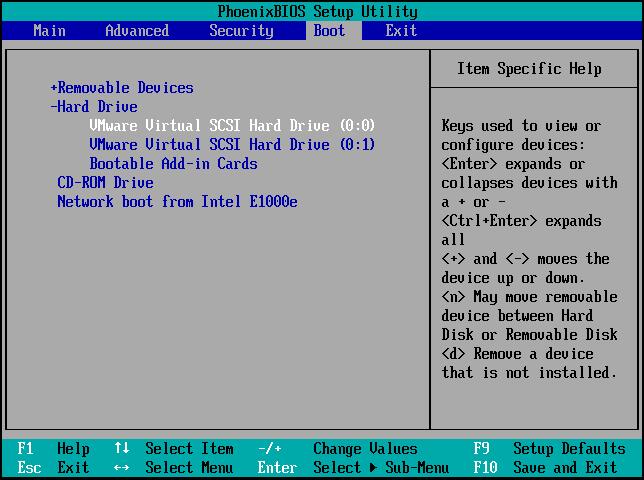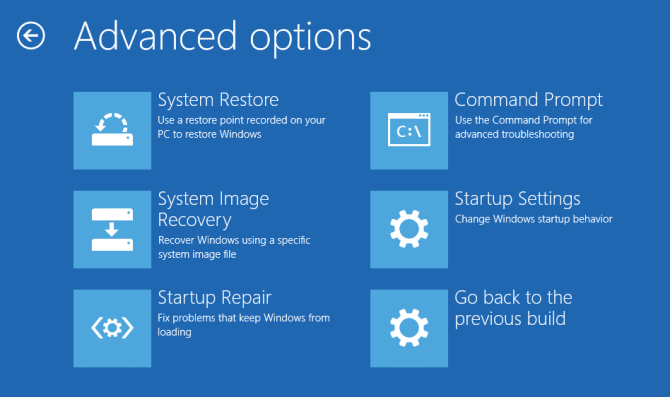Disk Boot Failure - Insert System Disk and Press Enter in Windows 10
On this page, we provide 4 fixes to help you remove the Windows Disk Boot Failure error and help you restore lost data with reliable file recovery software. Follow to remove this error and make your computer work again:
| Workable Solutions | Step-by-step Troubleshooting |
|---|---|
| Fix 1. Change Boot Order | Enter BIOS > Go to "Boot" > Set the system disk in the first option > Save changes...Full steps |
| Fix 2. Repair Operating System | Boot computer from installation disk > Click "Net" in Windows Setup > "Repair your computer"...Full steps |
| Fix 3. Fix by Running chkdsk | Run CHKDSK to check system disk > Fix unrecognizable system disk...Full steps |
| Fix 4. Remove Installed Hardware | Remove the newly added hardware > Check the cables of the hard disk...Full steps |
| Extra Tip. Recover Data | For the lost data on problematic disk, run Deep Data Recovery > Scan and recover...Full steps |
About Disk Boot Failure
The disk boot failure, or more specifically speaking, "DISK BOOT FAILURE - INSERT SYSTEM DISK AND PRESS ENTER", is an error that means Windows couldn't load correctly. Indicated from the error message, it asks you to insert a system disk. It means that the disk boot failure occurs because BIOS is unable to find a bootable drive to start up the computer during the startup process.

Error Explanation
The boot process of any computer generally includes the following steps:
- Power on
- Power-on self-test (POST)
- Find the boot device
- Load the operating system
- Transfer control to the operating system
These steps always go unnoticedly and quickly. However, if any issue happens during this process, you will encounter boot problems. For example, if BIOS fails to load the operating system, you may be stuck at a screen saying "Windows is loading files". If BIOS couldn't find a boot device, you will see the error message mentioned above.
Causes of Windows Disk Boot Failure
The disk boot failure appears when there is no boot device found. Why can't the BIOS locate your boot disk? There are three kinds of possibilities:
- Incorrect Boot Order in BIOS: A device that doesn't have the OS ranks first in the boot sequence
- Damaged operating system: The operating system is corrupted and BOIS can't recognize it
- Corrupted system disk: The system hard drive is damaged, unreadable, or unrecognizable
- Improper new hard drive configuration: The new hard drive is configured improperly
The disk boot failure is an upsetting issue. If you couldn't find a way to fix the disk boot failure, it will finally result in some other terrible problems like the black or blue screen of death, computer freezing randomly, system crash, etc. Therefore, carry out the fixes as soon as possible to eliminate your worries.
4 Fixes for Disk Boot Failure on Windows
Based on the potential causes of the disk boot failure, you can follow the solutions below to get rid of the error.
- Notice:
- Instead of fixing the disk boot failure, you may only want to rescue the data on your computer. If so, you can directly create a bootable USB with Qiling hard drive recovery software, boot your computer from the USB, and then recover all your files to an external storage device. Refer to the article on how to create a bootable media of Deep Data Recovery for Windows for detailed steps.
Method 1. Change BIOS Boot Order
If some other device, like a USB, has a higher priority than your system disk and you have a USB without OS connected to your computer, you can simply remove the external storage device and let BIOS boot from your system disk. If not, change the boot order in BIOS and make your system disk as the first option. (System disk doesn't show up in BIOS? Move to method 3 for solutions.)
To check a computer's boot order, follow these instructions:
Step 1. Restart the computer.
Step 2. Keep pressing F2 (Del, F8, F10, or F12) while your system boots to enter BIOS.
Step 3. Go to the Boot tab.
Step 4. Change the order to position the hard disk as the 1st option.
Step 5. Save these settings.
Step 6. Restart the computer.

Method 2. Repair Corrupted Operating System
Does the boot disk failure persist after setting the boot order correctly? If so, it's possible that the operating system is corrupted or the system disk is damaged. Since repairing the operating system is much easier than fix the hard drive, let's see how to repair the OS first. (You need a Windows 10 installation media using this method. If you don't have the CD/DVD or USB boot drive, learn how to burn ISO to USB to create a bootable media first.)
Step 1. Boot your computer from the installation CD/DVD/USB.
Step 2. In the Windows Setup window, click "Next".
Step 3. In the screen, choose "Repair your computer" > "Troubleshoot" and then you will see the Advanced options.
Step 4. Among these options, choose "Startup Repair" first. (You may see the message "Startup Repair cannot repair this computer automatically". Refer to the related article for fixes.) If it doesn't work, try "System Restore" instead.

Method 3. Run chkdsk to Fix the Damaged System Disk
If the disk boot failure problem appears due to the operating system or system disk is corrupted, you can run the chkdsk command to solve the problem. The chkdsk utility can detect if the computer's hard disk has certain issues.
Step 1. Boot from a Windows install disc
Step 2. Click on Repair your computer after selecting proper language, time, and keyboard input.
Step 3. Select the Windows installation drive, which is usually C:\, and click Next.
Step 4. Choose Command Prompt when the System Recovery Options box appears.
Step 5. Write the following command and press Enter afterward:
chkdsk C: /f
Replace "C:" with the letter of the driver where Windows is installed.
Method 4. Remove Newly Installed Hardware
If your problem happens because the new hard drive is configured improperly, try the steps below to fix the problem.
Step 1. Remove the newly added hardware and restart the computer to check if the error still appears.
Step 2. Check the cables of the hard disk where Windows is installed.
Step 3. Check the jumpers of the hard disk.
These are all the solutions to fix the disk boot failure issue caused by all the typical reasons. I hope at least one of them is helpful! If the disk boot failure still exists after all the fixes, you should consider reinstalling OS or sending your computer for manual repair.
Extra Tip: Recover Data After Fixing the Disk Boot Failure
Data loss may occur on your hard drive after the repair. If you lose any important files, you can use the trustworthy data recovery software - Deep Data Recovery to retrieve them.
Note: To guarantee a high data recovery chance, install Qiling data recovery software on another disk instead of the original disk where you lost files.
Step 1. Launch Deep Data Recovery on your Windows 11, Windows 10, Windows 8, or Windows 7 computer. Select file types and click "Next" to start.

Step 2. Select the disk partition or storage location where you lost data and click "Scan".

Step 3. This recovery software will start scanning the disk to find all lost and deleted files. When the scan process completes, click "Filter" > "Type" to specify lost file types.

Step 4. Preview and restore lost Windows files. You can double-click to preview the scanned files. Then, select the target data and click the "Recover" button to save them to another safe spot in the PC or an external storage device.
The Bottom Line
The disk boot failure is largely caused by a faulty boot order in most of the cases. And it's the simplest situation among the three possibilities. Boot issues like this always trigger anxiety in the mind of the user who is troubled by them. Luckily, by knowing how to cope with it, you can greatly weaken this emotion and get the problem solved by yourself.
Related Articles
- How Long Do Laptops Last and How to Extend the Life of Your Laptop
- Disk Cleanup Not Working Windows 10/8/7? Here Are the Free and Easy Fixes!
- Dash Cam Card Full Error: How to Fix 'Dash Cam Says SD Card Full'
- Task Manager Not Opening or Responding in Windows